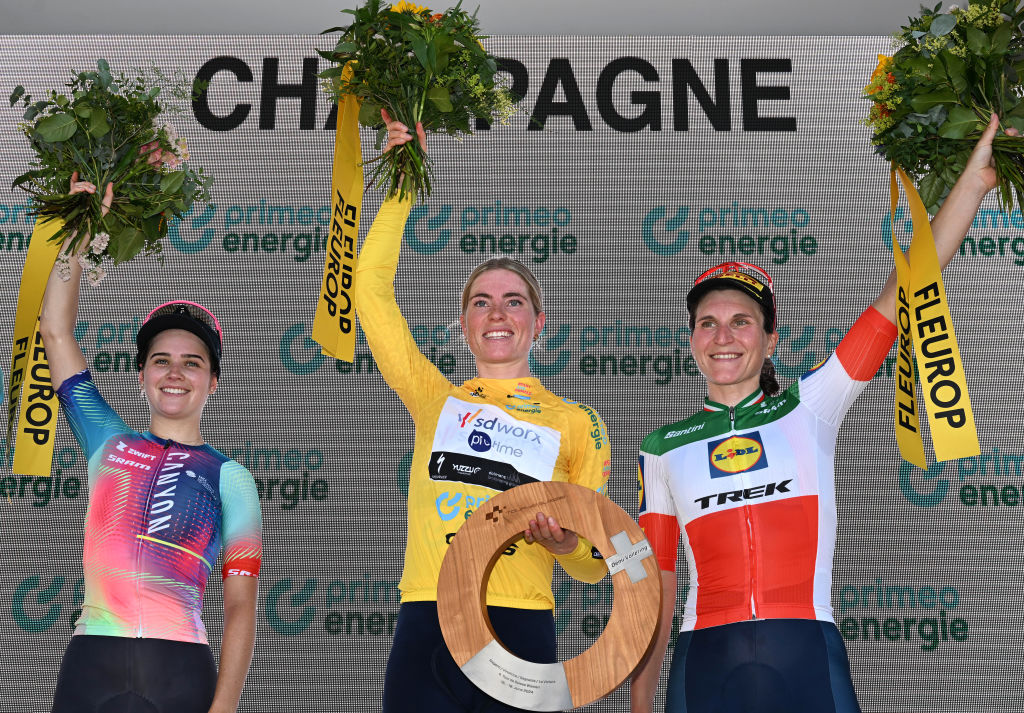Sean Zak
;)
Tyrrell Hatton showed a range of emotions Sunday night at Oakmont.
USGA
OAKMONT, Pa. — You could only wonder what was kicking around Tyrrell Hatton’s head as he made the lonely walk from U.S. Open scoring. He had just played one of the toughest rounds of golf in his life, he’d finished tied for fourth and he showed it in his slow, plodding strut.
Hatton stared at the ground ahead of him for each of the 50 steps to the interview area. What was he thinking? What did he want to say about his day? What was there to say, anyway?
He had just signed for a two-over 72 that he felt could have been, probably should have been, a 70. Maybe even a 69. On Saturday he had raised the alarm about the length of grass on Oakmont’s bunker faces, which made them extra treacherous. But on the 71st hole, his ball somehow halted on the downslope entry to a greenside bunker. When he most needed birdie or at worst, par, he received a horrific lie, Oakmont-style, which led to bogey. About 20 minutes and another bogey later he made that dejected walk.
When asked to assess his round, he said all the expected things — it was “a pretty tough day,” he felt he “played pretty well,” and managed the weather delay well. But then, the one thing stuck in his craw came out.
“The finish at the end hurts a lot,” Hatton said. “If you’re going to miss the 17th, with that pin, you have to miss it right. I did my bit. I feel like I was extremely unlucky to finish where it did …”
Before he could finish his answer, Hatton paused. In front of him was a TV on a slight delay, and the crowd surrounding the 18th green — maybe 70 yards away — had just groaned. Hatton turned his gaze away from the reporters to watch Viktor Hovland’s birdie try.
His face lit up as the ball nearly dropped in, but raced by.
“Sorry, I’m like everyone,” he said. “Just want to watch the TV right now.”
Hatton is high on the list of pros you’d want to share a pint with. If that pint came while watching golf, even better.
“What happened on 17 is going to hurt for a long time,” he continued. “It’s the first time I’ve been in contention in a major. That was exciting. And unfortunately, I feel like through a bit of bad luck I had momentum taken away from me and ultimately ended up not being my day.”
Oakmont was filled with luck — the good kind and the bad. Probably more of the latter than the former, if you polled the field. A perfect shot mostly took luck out of play, but Hatton certainly thought he had hit a pretty good one, and that he’d done right by missing right at 17. But at Oakmont, missing at all is a slippery (in this case, grabby) slope. Hatton was 26 yards from the hole and didn’t stand a chance.
A golfer who feels wronged by Oakmont? Pick a number and get in line! But we wanted some more context. A reporter asked what exactly made it unlucky. It was a genuine question, but worded in a way that set Hatton off.
Why was it bad luck, do you think?
His face said it all, stretching his neck backward in disbelief.
“Why was it bad luck?” he guffawed. “Well why do you think it was bad luck? What kind of question is that?”
What made it bad luck, do you think?
“Oh, you think stopping on the downslope, in the rough? Like, that’s ridiculous.
“As I said, if you’re going to miss that green, you have to miss it right in the bunker. Obviously a decent tee shot, that would be on the green. But I’ve missed it in the right spot and got punished. Which ultimately, I don’t think ends up being fair.”
Ah, fair. The chief buzzword of the U.S. Open. “Tough, but fair” is literally a USGA motto for this event. They never want to cross the line into unfair. But they will certainly test its limits, particularly at this course, and at Shinnecock and Pinehurst. Players said the 11th and 12th fairways, for example, seemed impossible to hold, even with what felt like perfect tee shots.
But Hatton was arguing for fairness in the context of a missed shot. When they look at a hole, most pros agree on the perfect shot and they’ll settle on a proper miss. But no one seems to agree on how severely and how predictably U.S. Open hosts should punish those misses. Oakmont seemed to punish everything that wasn’t mostly perfect. That is what we could spend an entire afternoon discussing with Tyrrell, sharing drinks and watching golf. It seems like a safe bet that he’d have plenty to say.
Things moved quickly late Sunday night, as they do at golf tournaments. As Hatton was asked another question, we heard another murmur from the crowd on 18. Once again, his eyes darted back toward the TV. J.J. Spaun had just struck his putt from 64 feet away. The murmur turned to a rumble and Hatton stopped mid-sentence. Then a roar.
“Oh, he’s holed it,” Hatton said, mouth agape, stuck in amazement. On the television, the putt dropped and Spaun launched his putter. “Un-be-lievable.”
He was stunned. So were we. “Jesus Christ!” went one reporter, loud enough to be caught on the mic. Suddenly Hatton was grinning, wide as ever.
“What a putt to win.”
That’s Tyrrell Hatton right there. Chippy, fiesty, honest, enthusiastic, awed. That’s an elite golfer made giddy by golf fandom. That’s the knife’s edge a U.S. Open — an impeccable 72 that should have been a 70. Maybe even a 69. And then some sudden comfort, knowing it wouldn’t have even mattered.
“>
;)
Sean Zak
Golf.com Editor
Sean Zak is a senior writer and author of Searching in St. Andrews, which followed his travels in Scotland during the most pivotal summer in the game’s history.













